Among my most enjoyable day-long excursions is a trip from Munich to Garmisch-Partenkirchen and the Zugspitze, during a winter city break to the Bavarian capital in 2015.
Good weather or, at the very least, good visibility, is a necessity for ascending to Germany’s highest peak, which offers spectacular views of over 400 mountain peaks across four countries.
Some degree of luck is always needed when planning such journeys as part of a short city break, for there’s limited opportunities to wait around for a day with a good forecast.
Fortunately, the best weather of the four-day trip was on a Saturday – when no time limits on off-peak travel are in place, enabling for an earlier start in order to make the most of the reduced daylight hours of February.
The journey began at a little after 6.30am, with a near-empty local train service into Munich Hauptbahnhof. The train heading for the Austrian border, however, was anything but quiet; every seat, along with every inch of aisle space, filled with skiers and snowboarders heading for a day on the slopes.
There was such a buzz of excitement, especially as the train closed in on Garmisch, passing a queue of traffic many miles long of drivers heading to the same region, and probably for the same reason.
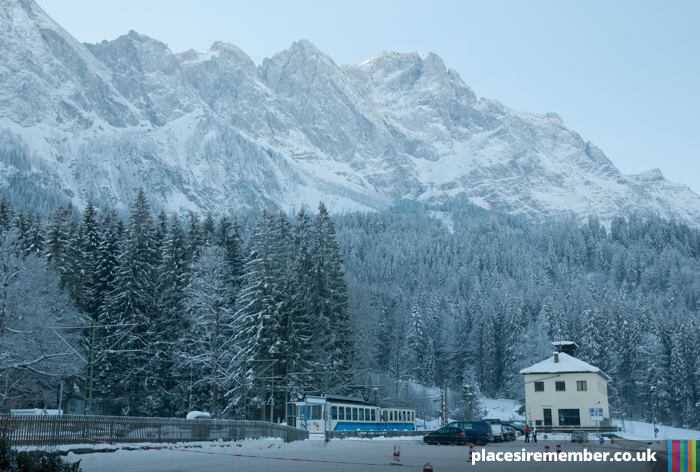
Maps and Haribo sweets were handed out to all onboard, along with information for lift passes. With so many people, I feared a long wait for the mountain train connecting Garmisch with the Zugspitze. But, as we departed the train with the light just starting to break through the morning mist, most passengers remained on board, heading instead for the next and final destination of Lermoos, situated just across the Austrian border.
Although the jagged peak of the Zugspitze was just about visible through the haze, the mountain train was another 90 minute journey, although a cable car at Eibsee offered a chance to speed up the final 2,000 metres of the ascent, with an additional benefit of such a method being the ability to enjoy the stunning scenery during a ride not for the faint-hearted!
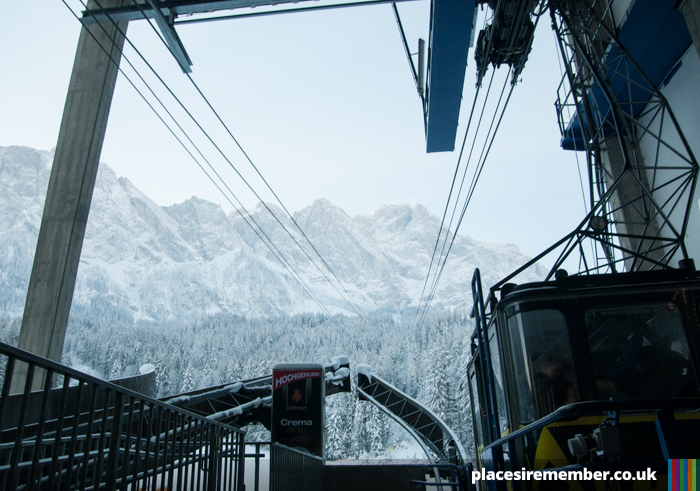
Once out of the cable car, only a couple of flights of stairs remained before reaching the Top of Germany, at which point a temperature reading spelt out how misleading the blue sky and bright sunshine looked from inside the cosy summit complex; outside, it was -18°C!
In truth, it didn’t feel any colder than the previous day, though it was clear that the effects of the sub-zero temperatures were affecting the skin much more quickly, and the skin of the fingers was beginning to crack after the briefest exposure to the elements while photographing the snow-capped landscape.
It was therefore not possible to spend too long outside, but with the border of Austria cutting through the outside terrace, there was just enough time to venture briefly into Tirol, where a second cable car was in operation for visitors arriving from Austria.
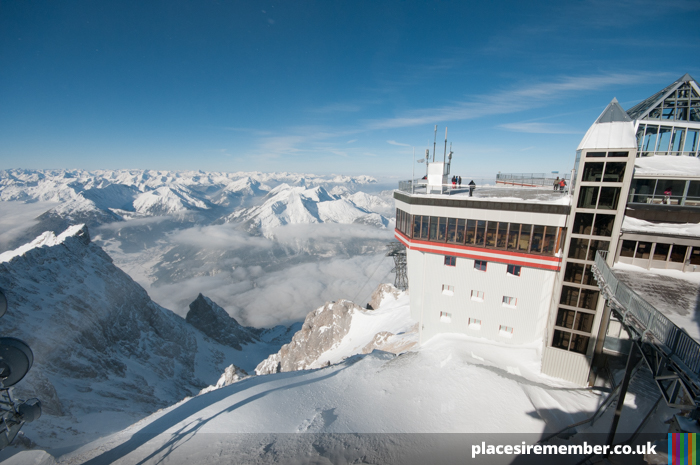
On the opposite side of the Zugspitze summit was the vast space of the slopes being used for skiing and snowboarding, and a large circular restaurant serving a choice of hearty dishes; not that many customers were taking advantage of their available options, instead flocking straight towards the sausage and bean stew, ready for another session of snow sports.
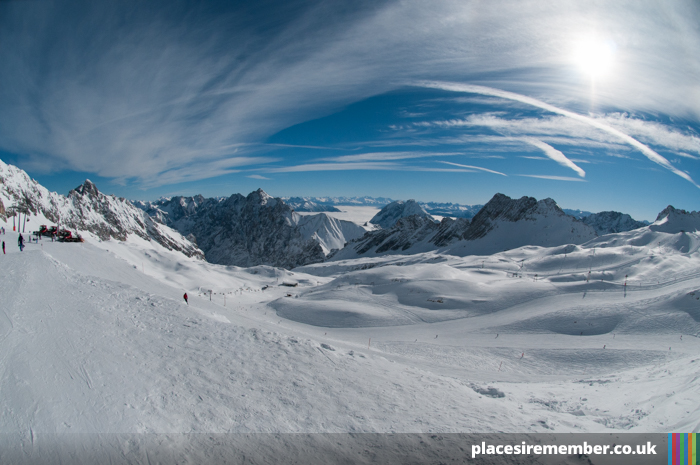
For the non-skiers among us, the journey continued with a return cable car journey back down to Eibsee, a small town so deep in snow that it seemingly functioned only as a car park for those on the mountain during winter.
The cable car was followed by a train journey halfway back towards Garmisch-Partenkirchen, stopping at the second of the two peaks that were included on the Garmisch Classic day pass: Alpspitz.
The cable car was neither as high nor as steep as that which transported passengers to the dizzy heights of Zugspitze, but still required dangling hundreds of metres above the ski runs slaloming through the trees below.
Situated a short walk from the cable car station was one of the more recently-added local attractions, hanging off the mountain as two steel walkways – one on top of the other – in an X configuration.
Known as the AlpSpiX, it was a observation platform with a metal grid below, and positioned above a straight drop of a significant distance! At the end was a glass window of around chest height, beyond which was the town of Garmisch-Partenkirchen in the distance.
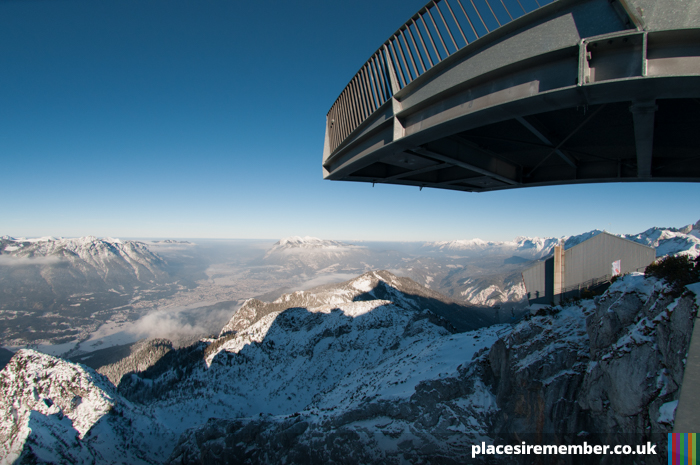
With the platform conquered, an ice cold German beer was the next box to tick off, and with the sun having just disappeared, causing the balcony of the mountain-top restaurant to be entirely in shade, the outside temperature, too, took a sudden nosedive – to such an extent that the beer’s foamy head was forming a wafer-thin layer of ice between sips!
As the low light began to bring the day’s action to a close, it was time to head back to ground level, where scores of skiers were packing up their cars and heading home, to the backdrop of a quite spectacular sight of the sun casting a shadow over the sky as it set behind the mountains.
The last stop was back in Garmisch-Partenkirchen, a town that was much quieter than expected, with few people on the streets other than the last of the shoppers finishing their purchases in its quirky boutiques.
Flanked by towering mountains in all directions,it’s a place that would always look impressive, but the lights dotted along the high street resembled a village readying itself for Christmas, or a film set for a fairy tale.
To return one day and see the town, and the mountains, during summer would undoubtedly afford an entirely different perspective of this most stunning of places.
But this trip was concluded with the arrival of the 7.10 train back to Munich, and a positively balmy -7°C. Almost warm enough to take off the gloves once more.
The ticket office and station for the Zugspitze train are situated just a couple of minutes from Garmisch-Partenkirchen railway station. A non-skier one day pass covering ascents to both the Zugspitze and Alpspitz is currently priced at €58,50. Further information is available from: http://zugspitze.de/en/winter

test comment for zugspitze